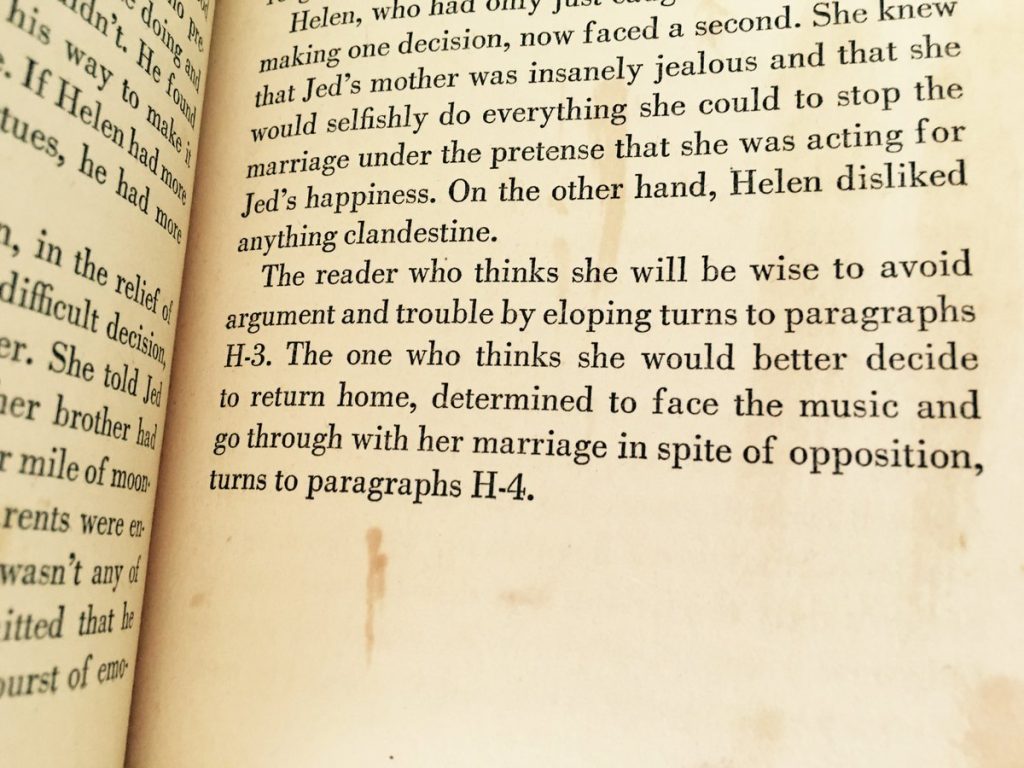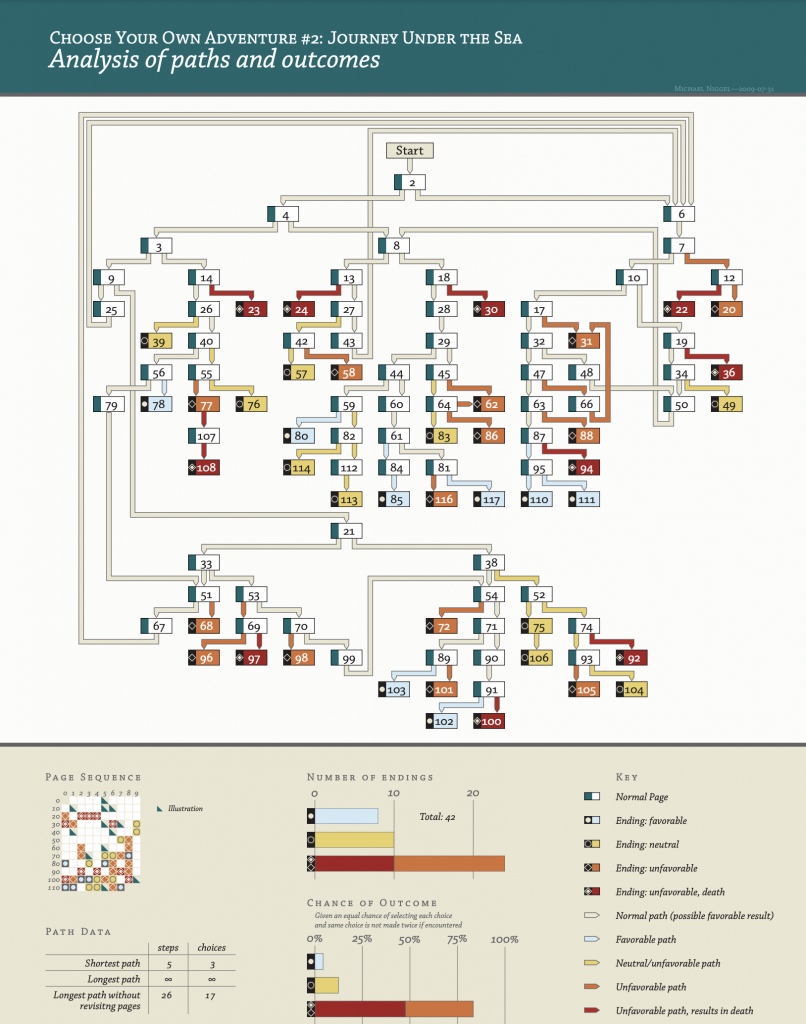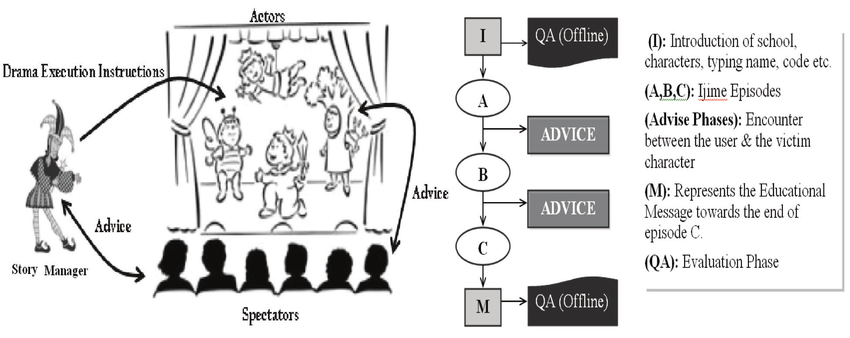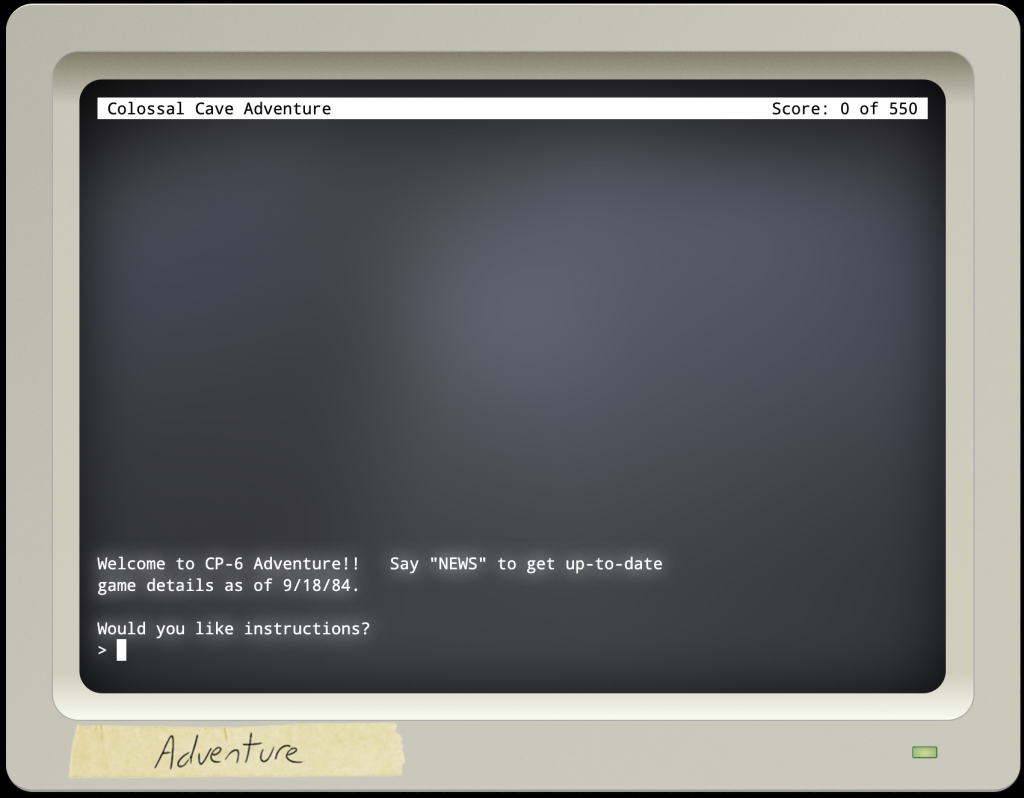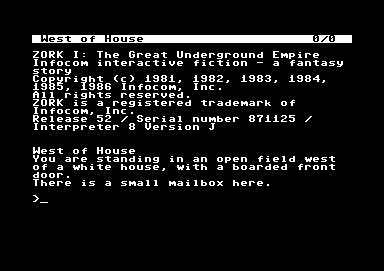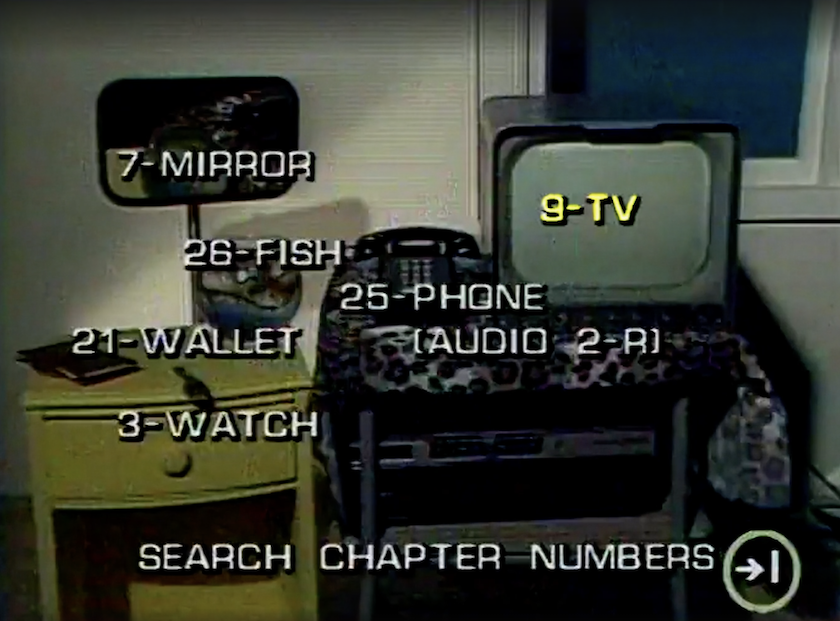Here’s an abbreviated, partial history of interactive narrative that pertains especially to our current project. Some notes have been cribbed from Paolo Pedercini.
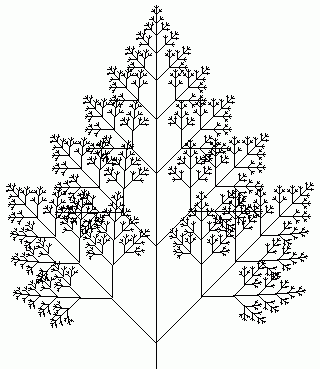
The problem with branching stories

The most common solution (parallelism, convergence, etc.)
Or another solution…
(From YouChoseWrong, an archive of bad endings from choose-your-own-adventure books.)
The most popular artifacts of this kind are the Gamebooks or Choose Your Own Adventure. Very popular teenage literature in the 80s and 90s.
One of the earliest known examples is Consider The Consequences! (1930, by Doris Webster and Mary Alden Hopkins). Here’s a diagram of a more recent one:
In the 1920s, the DADA movement conceived of nonlinear text:
To make a Dadaist poem Take a newspaper. Take a pair of scissors. Choose an article as long as you are planning to make your poem. Cut out the article. Then cut out each of the words that make up this article and put them in a bag. Shake it gently. Then take out the scraps one after the other in the order in which they left the bag. Copy conscientiously. The poem will be like you. And here you are a writer, infinitely original and endowed with a sensibility that is charming though beyond the understanding of the vulgar. – Tristan Tzara, 1920
Augusto Boal’s Forum Theatre (1960)
In this process, the actors or audience members could stop a performance, often a short scene in which a character was being oppressed in some way (for example, a chauvinist man mistreating a woman or a factory owner mistreating an employee). The audience could propose any solution, so long as they conveyed it on stage, working, acting, and directing not from the comfort of their seat.
Kinoautomat by Radúz Činčera (1967), the “first interactive film”:
“The film is a black comedy, opening with a flash-forward to a scene in which Petr Novák (Miroslav Horníček)’s apartment is in flames. No matter what choices are made, the end result is the burning building, making the film —as Činčera intended— a satire of democracy”
The Oulipo literary movement (early 1960s) – Ouvroir de littérature potentielle (workshop of potential literature). Hundred Thousand Billion Poems (1961):

ELIZA (Joseph Weizenbaum, 1964-1966). Try it out. From Wikipedia:
ELIZA is an early natural language processing computer program, created to demonstrate the superficiality of communication between humans and machines. Eliza simulated conversation by using a “pattern matching” and substitution methodology that gave users an illusion of understanding on the part of the program. The most famous script simulated a psychotherapist and used rules, dictated in the script, to respond with non-directional questions to user inputs. As such, ELIZA was one of the first chatbots and one of the first programs capable of attempting the Turing test. Weizenbaum was surprised by the number of individuals who attributed human-like feelings to the computer program, including Weizenbaum’s secretary.[2] Many academics believed that the program would be able to positively influence the lives of many people, particularly those suffering from psychological issues, and that it could aid doctors working on such patients’ treatment. While ELIZA was capable of engaging in discourse, ELIZA could not converse with true understanding. However, many early users were convinced of ELIZA’s intelligence and understanding, despite Weizenbaum’s insistence to the contrary.
Colossal Cave Adventure (1975-1977) was the first nonlinear text-based adventure game software. Try it out.
ZORK. (1977-1979) Try it out.
Zork is an interactive fiction computer game, released as a commercial game for personal computers.
Galatea (2000) by Emily Short.
Galatea is an interactive fiction video game by Emily Short featuring a modern rendition of the Greek myth of Galatea, the sculpture of a woman which gained life. It took “Best of Show” in the 2000 IF Art Show[1][2] and won a XYZZY Award for Best Non-Player Character.[2][3] The game displays an unusual rich approach to non-player character dialogue and diverts from the typical puzzle-solving in interactive fiction: the whole gameplay is based on the interaction with a single character in a single room.
AI Dungeon (2020). Try it out (choose ‘Prompts’)
Beyond Text: Interactive Video
Aspen Movie Map, Lippman, Naimark et al. (1979-1981):
Lynn Hershman-Leeson, Lorna (1981, jump to 6:37)
Façade, (2005) a natural language processing-based interactive narrative game created by Michael Mateas and Andrew Stern. It was the winner of the Grand Jury Prize at the 2006 Slamdance Independent Games Festival and has been called “the first true interactive storytelling software”. (Watch first 4 minutes)
And…




